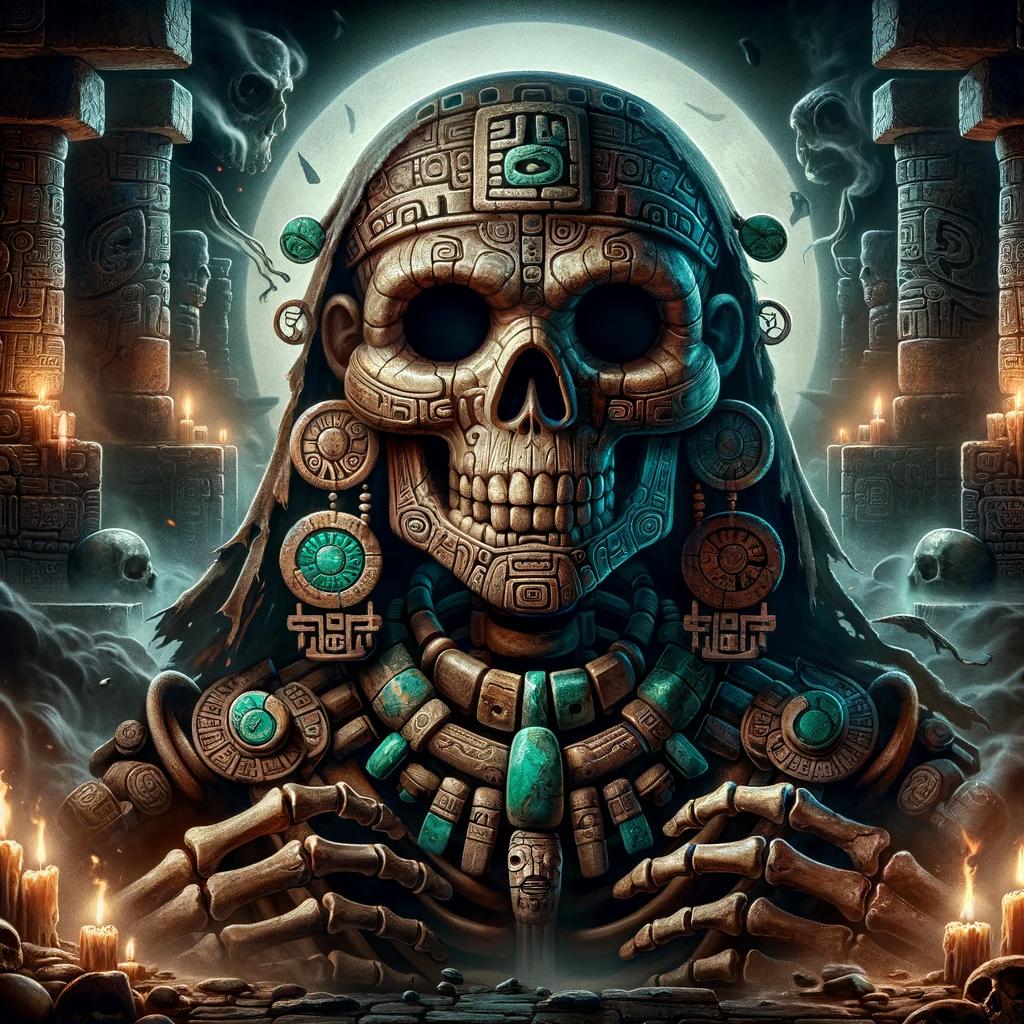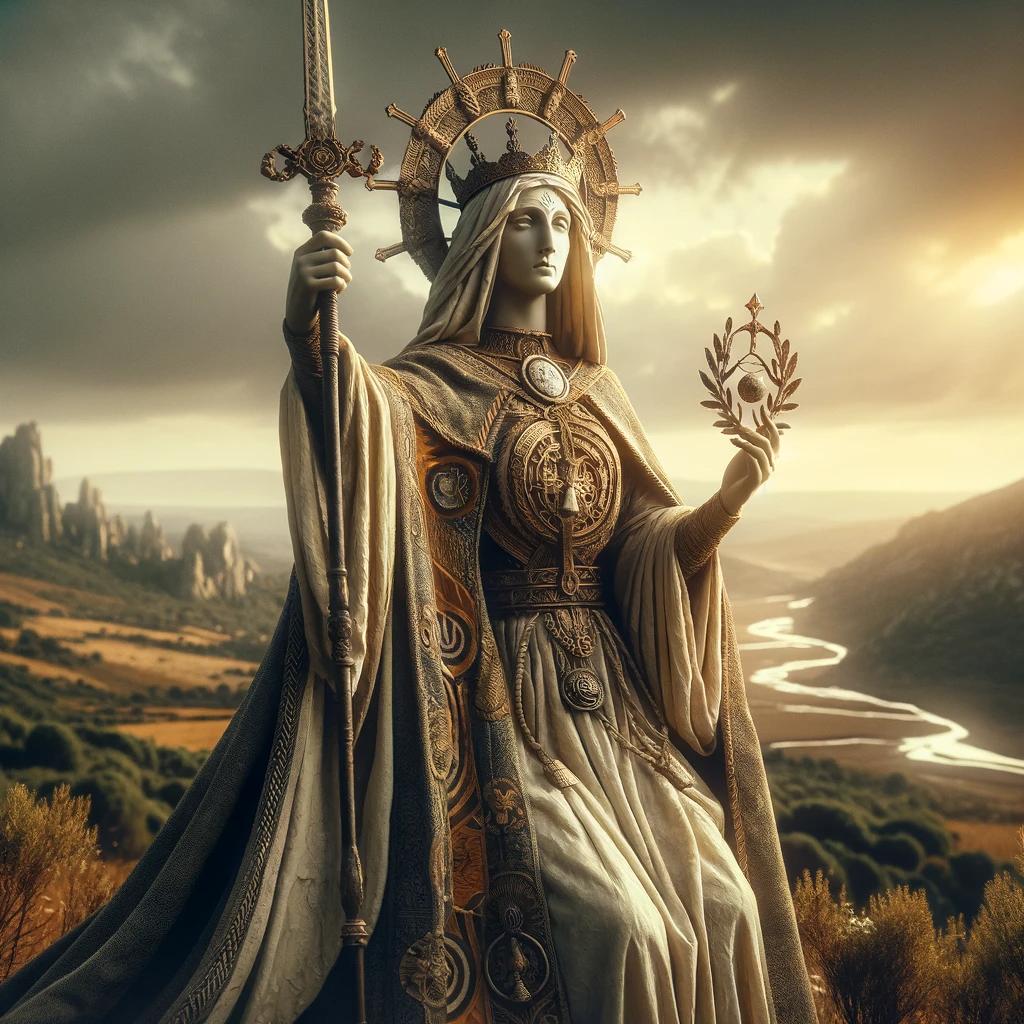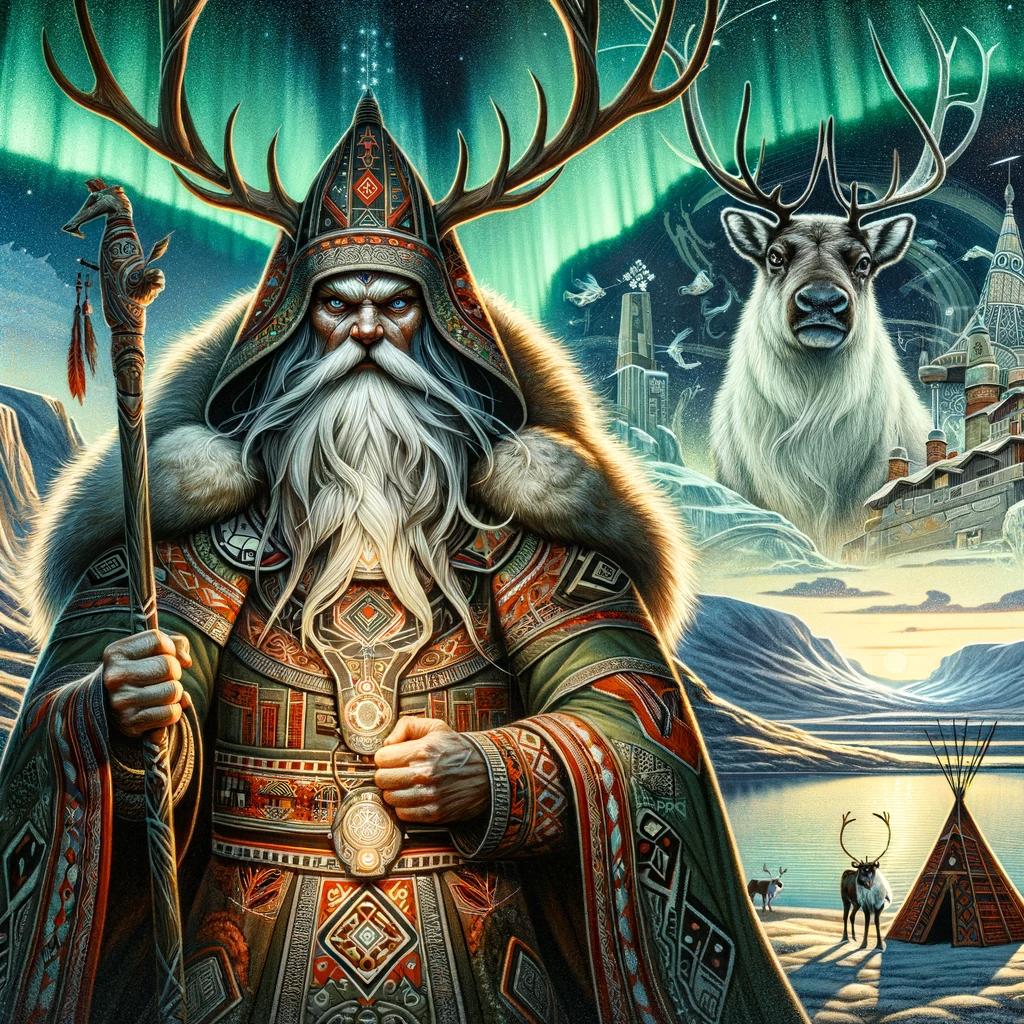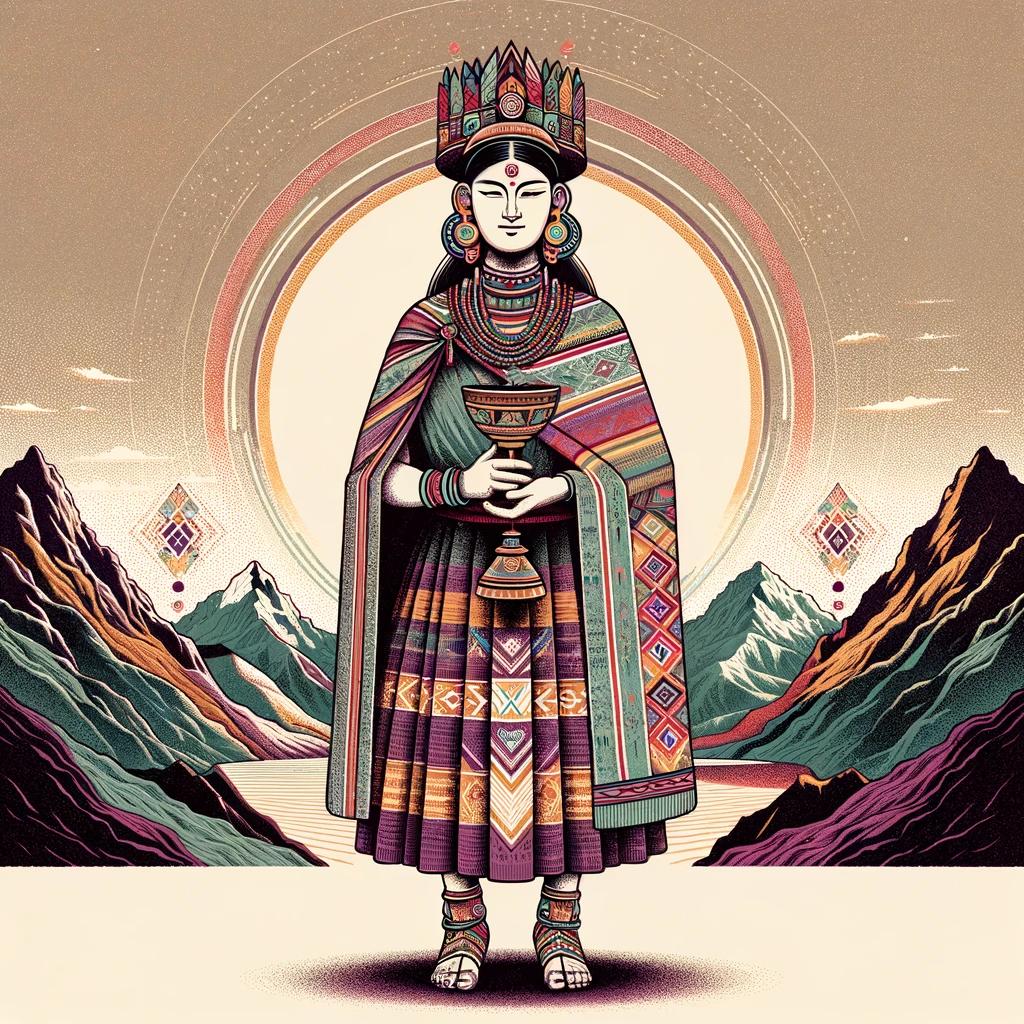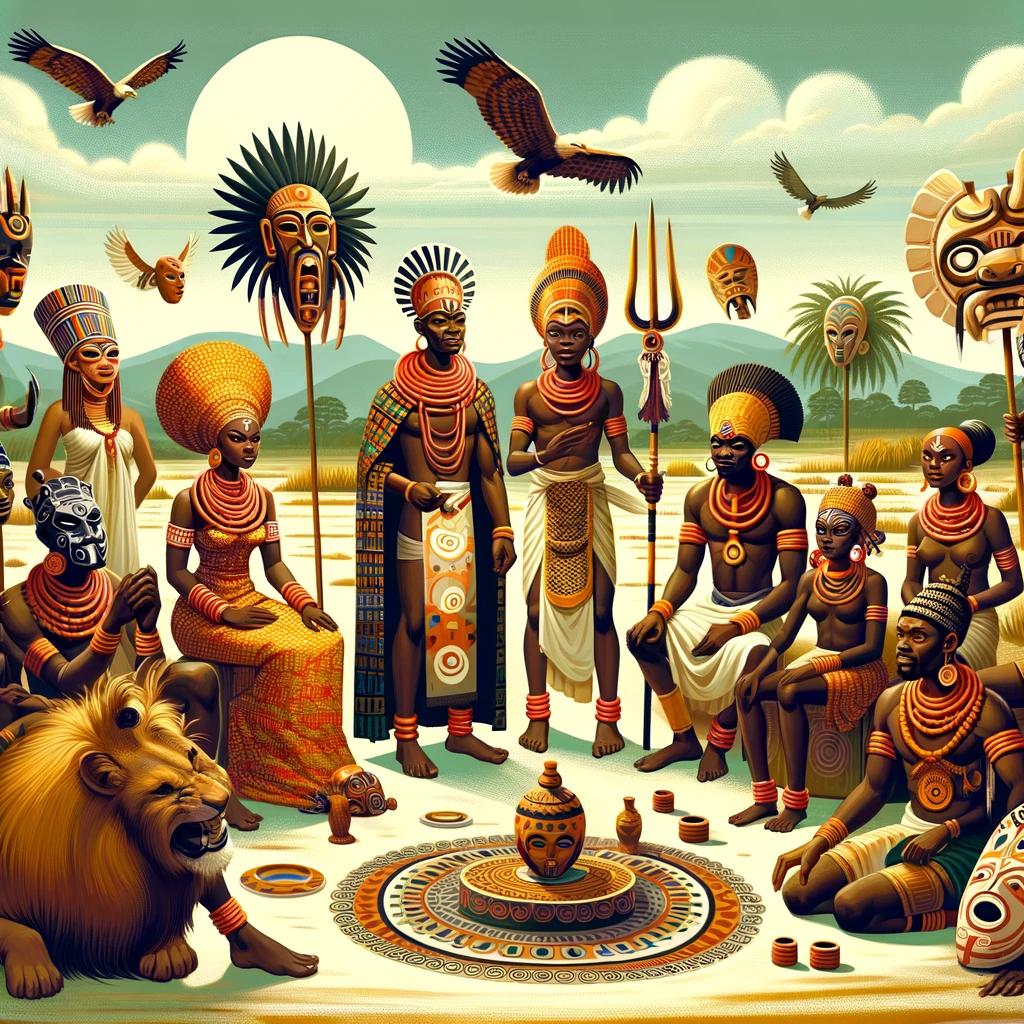Ainu Mythology Gods and Goddesses: Exploring the Divine Beings of Ainu Culture

Gods and goddesses hold immense significance in Ainu mythology, the traditional belief system of the Ainu people. This ancient pantheon comprises various deities representing the natural world, sky, weather, mountains, forests, and household.
In Ainu creation myths, these divine beings played pivotal roles in the formation of the world and the Ainu people. Rituals and ceremonies formed an integral part of Ainu culture, with practices like the Bear Ceremony honoring the sacred bear and rituals for the deceased.
Ainu mythology continues to inspire contemporary culture, while efforts are made to preserve and revive its rich heritage.
Gods and Goddesses in Ainu Mythology
Gods and goddesses play a central role in Ainu mythology, representing various aspects of the natural and supernatural world. The Ainu pantheon is diverse, consisting of major deities and lesser spirits, each with their own unique characteristics and roles.
Overview of the Ainu Pantheon
The Ainu pantheon encompasses a wide range of divine beings worshipped by the Ainu people. These deities are believed to govern different elements of the world, including nature, weather, mountains, forests, and household affairs.
Respect and reverence for these gods and goddesses are fundamental aspects of Ainu culture and spirituality.
Major Deities in Ainu Mythology
The major deities in Ainu mythology are known as Kamuy. They hold significant influence and power over various aspects of life. The Kamuy are categorized into different groups. Each group of deities plays a vital role in maintaining balance and harmony in the world.
Kamuy: Gods of the Natural World
The Kamuy of the Natural World embody the forces of nature, such as rivers, lakes, trees, and animals. They are revered as guardians and protectors of the environment, representing the interconnectedness between humans and the natural world.
Kanno-Kamuy: Gods of the Sky and Weather
Kanno-Kamuy are the deities associated with the sky, weather phenomena, and celestial bodies. They control elements like wind, rain, thunder, and lightning, playing a vital role in shaping the weather patterns and influencing agricultural practices.
Kim-un-Kamuy: Gods of the Mountains and Forests
Kim-un-Kamuy are the gods of mountains and forests, representing the sacredness and spirit of these earthly realms. They are often associated with hunting, gathering, and the abundance of natural resources found within these environments.
Kamuy-Fuchi: Goddesses of Hearth and Household
Kamuy-Fuchi are the goddesses of the hearth and household. They are responsible for protecting the homes and ensuring the well-being of individuals and families. These goddesses are invoked during rituals for blessings, fertility, and domestic harmony.
Lesser Deities and Spirits in Ainu Mythology
In addition to the major deities, Ainu mythology also includes numerous lesser deities and spirits. These beings have specific domains and roles, such as guardian spirits of specific animals, plants, or natural phenomena.
They are considered important mediators between humans and the divine realm.
Ainu Creation Myth
Ainu creation myth holds a profound belief in the origins of the world and the Ainu people. According to their mythology, the universe began with the existence of the divine beings, known as kamuy, who shaped the world and its inhabitants.
Creation of the World and the Ainu People
In Ainu mythology, the world was conceived through a series of events involving the elemental forces of nature and the interactions of deities. It is believed that the primeval land, called “Ainu Mosir,” emerged from the sea.
The divine beings then formed mountains, rivers, forests, and other natural landscapes. They carefully crafted the land and infused it with life, giving rise to animals, plants, and eventually, human beings.
According to Ainu legend, the first man and woman, known as the “Fossil Man” (Ashiri
Rituals and Ceremonies in Ainu Mythology
The Ainu people hold rituals and ceremonies in high regard, as they play a significant role in their culture and spiritual practices. These rituals serve as a means of connecting with the divine and maintaining harmony with nature.
Importance of Rituals in Ainu Culture
Rituals hold a central place in Ainu culture, serving as a way to establish a bond with the gods and goddesses of their mythology. They are seen as a way to communicate with the spiritual realm and seek blessings for various aspects of life.
Ainu Bear Ceremony: Honoring the Sacred Bear
One of the most important ceremonies in Ainu mythology is the Bear Ceremony, which pays tribute to the sacred bear. The Ainu people believe that the bear is a deity and a messenger between humans and the divine.
The ceremony involves rituals, dance, and offerings to express gratitude for the bear’s blessings and to ensure its continued protection and abundance.
Soul Concepts and Rituals for the Dead
The Ainu have rich beliefs regarding the existence and journey of the soul after death. Various rituals and practices are performed to guide the departed souls, offer prayers, and honor their ancestors.
These rituals also serve as a way to connect with the spiritual realm and seek guidance from the gods and goddesses.
The Ainu people’s rituals and ceremonies are deeply rooted in their mythology, providing a way to maintain their cultural identity, strengthen their spiritual connection, and ensure balance and harmony in their lives.
Ainu Mythology and Human Life
Role of Deities in Human Life
Ainu mythology portrays a strong connection between deities and human life. The Ainu people believe that these divine beings actively participate in shaping their daily existence. Deities are seen as guardians, protectors, and guides, having the power to influence various aspects of life, including health, prosperity, and fortune.
Ainu Mythology and Everyday Practices
Ainu mythology deeply influences the everyday practices and rituals of the Ainu people. It forms the foundation of their spiritual beliefs and guides their interactions with the natural world. From offering prayers and performing ceremonies to seeking blessings and guidance, Ainu individuals integrate mythology into their daily routines as a way to honor and maintain harmonious relationships with the divine.
Tales of Humans Interacting with Deities
Ainu mythology is rich with fascinating tales of humans who interact with deities, portraying profound interactions between the mortal and divine realms. These stories often highlight the significance of human virtues such as courage, wisdom, and respect, as individuals navigate encounters with deities.
Through these tales, Ainu mythology explores the complex dynamics of human-divine relationships and the potential impact they have on human lives.
Monsters and Demons in Ainu Mythology
The rich mythological world of the Ainu people is dotted with various monsters and demons that inhabit their folklore. These creatures embody the Ainu concept of evil spirits and represent both danger and intrigue in Ainu mythology.
Ainu Concept of Evil Spirits and Demons
According to Ainu belief, evil spirits and demons, known as “akkorokamui,” are supernatural entities that bring misfortune and harm to humans. These malevolent creatures are often depicted as large octopuses or squid-like beings with long, writhing tentacles.
They dwell in the sea and pose a threat to those who venture too close to their territory.
There is a prevailing belief among the Ainu that these evil spirits can cause illness, accidents, and other mishaps.
They may also possess individuals, leading to abnormal behavior and sickness. To protect themselves from these malevolent forces, the Ainu perform rituals and prayers to appease and ward off these dangerous entities.
Famous Monsters and Demons in Ainu Mythology
- Chup Kamui: This fearsome creature is often described as a shape-shifting sea monster resembling a giant squid. It is believed to have the ability to prolong its tentacles and swallow entire boats or divers.
The Ainu offer prayers and perform rituals to ensure safe passage through its watery domain.
- Repun Kamui: This mythical sea monster is depicted as a giant fish or whale-like creature with the ability to produce powerful waves and cause destructive storms.
The Ainu associate it with dangerous maritime conditions and traditional fishing practices, and they seek its protection before embarking on sea voyages.
- Kimun Kamui: Representing the wrathful spirits of drowned people, Kimun Kamui is often depicted as a malicious monster that appears as a swirling whirlpool or maelstrom.
The Ainu believe encounters with this deity are ominous signs and may signify impending danger.
- Pirka Kamui: This monstrous creature takes the form of a giant snake or serpent and is known for its venomous bite.
It is associated with diseases and is believed to be responsible for ailments that affect both humans and animals. The Ainu perform rituals and offerings to ward off its malevolence.
These famous monsters and demons in Ainu mythology add depth and intrigue to their folklore.
They serve as cautionary tales and reminders of the dangers that lurk in the natural world, emphasizing the importance of respecting and harmonizing with nature.
Overall, the Ainu concept of evil spirits and the existence of famous monsters and demons play a significant role in shaping the mythology and worldview of the Ainu people, highlighting their reverence for nature and the supernatural forces that govern their lives.
Ainu Mythology Today
Ainu mythology continues to have a significant presence in contemporary culture, with efforts focused on its preservation and revival. The rich heritage of Ainu gods and goddesses, along with their stories and rituals, is being actively studied and documented by scholars and researchers.
Preservation and Revival of Ainu Mythology
Recognizing the importance of preserving Ainu mythology, various initiatives have been undertaken to ensure its survival. Institutions such as museums, cultural centers, and educational institutions are working towards collecting, preserving, and sharing Ainu folklore and mythology with the wider public.
Efforts are also being made to revitalize Ainu cultural practices and rituals associated with mythology. Traditional ceremonies, such as the Bear Ceremony and rituals for the deceased, are being revived and celebrated to keep the ancient traditions alive.
Additionally, Ainu language revitalization programs are helping to preserve the unique vocabulary and terminology associated with Ainu mythology. These efforts aim to ensure that future generations have access to and can understand the rich mythology of their ancestors.
Influence of Ainu Mythology on Contemporary Culture
Ainu mythology continues to inspire and influence various aspects of contemporary culture. Its profound impact can be seen in art, literature, music, and even popular culture.
Artists and writers draw inspiration from Ainu mythology, incorporating its themes and motifs into their creations.
Traditional Ainu patterns and symbols are often used as visual elements to represent the ancient gods and goddesses.
Ainu mythology also plays a significant role in literature, with authors exploring and reimagining these ancient tales in new contexts.
These writings contribute to the preservation and promotion of Ainu culture and mythology.
Furthermore, the influence of Ainu mythology can be observed in music, where musicians incorporate traditional Ainu instruments and melodies into their compositions.
This fusion of traditional and contemporary music serves to both honor the mythology and introduce it to a wider audience.
In popular culture, references to Ainu mythology can be found in various forms of media, including films, anime, and video games.
These references not only entertain but also contribute to the awareness and understanding of Ainu mythology among a global audience.
Overall, Ainu mythology continues to thrive as a living tradition that proudly celebrates the gods and goddesses of the Ainu pantheon.
Its preservation and influence on contemporary culture ensure that the rich heritage of Ainu mythology will endure for future generations.
.











